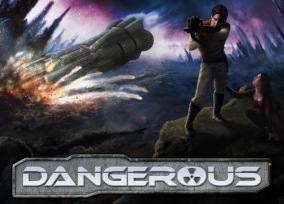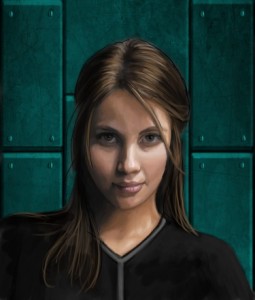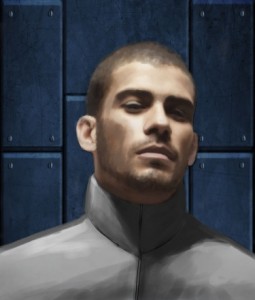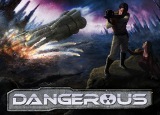 How many people work behind the Binary Helix label, and is Dangerous everyone’s first videogame industry experience?
How many people work behind the Binary Helix label, and is Dangerous everyone’s first videogame industry experience?
There are two of us at Binary Helix: myself, Linh Ngo, and Andrew Bradford. We met in college, where I had started a MUD called Copper DikuMUD, based on the original DikuMUD. (A DikuMUD is a large persistent multiplayer text game with D&D classes. They are the precursors to MMOs like Everquest, and many are still running.) Andrew joined not long after, and we both improved the code by adding new AI, weather systems, an arena, additional content, and other experimental features related to governance. At the time, it was one of the more popular DikuMUDs. We had more fun coding than playing. CopperDiku was retired when we graduated, and the last chaotic days were documented in a published book about MUDs. We released the updated source code and Copper lives on in other MUDs.
Some years later, we met up again at Online Network Enterprises (ONE), an ISP that I helped found. ONE later merged with VR-1 Entertainment when the ISP business was sold off. They were both funded by the same venture capitalist. VR-1 made several notable games, such as Fighter Ace, published by Microsoft, UltraCorps, now owned by Steve Jackson Games, and Nightcaster for Xbox. We were involved in pretty much everything from networking to systems administration and coding.
 So the team’s passed the two-year mark on this project as you head into the home stretch, right? Did you have any inkling that it might take this long when you first started? What were the most time-consuming challenges the team had to surmount along the way – or was it simply difficult to find the time in the first place, due to primary jobs, etc.?
So the team’s passed the two-year mark on this project as you head into the home stretch, right? Did you have any inkling that it might take this long when you first started? What were the most time-consuming challenges the team had to surmount along the way – or was it simply difficult to find the time in the first place, due to primary jobs, etc.?
I originally naively thought we could pull this off in six months. But feature creep and the scope of the project grew immensely. We both work mostly full-time on this project. I wrote the original simple prototype and design, and Andrew took over from there, turning it into a real game. In addition to this game, we manage various websites using a content management system we wrote from the ground up. We’re lucky that this activity lets us pursue our passion. Both of us are also involved in theater, screenwriting, and indie film-making. We brought some of our directing style into the game by incorporating a “cinematic” camera that swivels and zooms to show you incoming enemies, ships docking and undocking, missile views, etc. This, along with the radar, improves situational awareness. I felt that many games today, like EVE Online, are missing out on telling the story in-game. They put out these awesome YouTube videos, but the game plays nothing like the videos. So our camera attempts to show you space combat with a cinematic flair, at the same time improving situational awareness.
It’s hard to pinpoint the most time-consuming challenges, partly because the game evolved quite a bit. It originally was to be a kind of Monster Hunter in space, with the ships actually evolving their behavior over time and adapting to your tactics. We developed a virtual machine (VM) with opcodes to accomplish this. It’s no longer Monster Hunter in space, but the VM is still in the game as a way for ships to perform their actions.
In addition to the VM engine, we have a form of cooperative multitasking giving each ship a “slice” of the CPU time to execute its opcodes. There is a lot of tech under the hood. The operating system classes at the university came in handy after all! Players can also store ships and items at any station since we use an SQL database. Probably the living universe and all its attendant baggage, like factions and the follow-through warp mechanic, was the most time-consuming. Happily, the engine is fairly adaptable, so we might reuse the tech for a car-based RPG down the road.
 The latest preview video touts “accurately modeled solar systems.” Is the player looking at real-world star systems then, or just a fictional galaxy where everything is properly scaled and consistent with the laws of physics? How much scientific research did the team do before designing the game universe?
The latest preview video touts “accurately modeled solar systems.” Is the player looking at real-world star systems then, or just a fictional galaxy where everything is properly scaled and consistent with the laws of physics? How much scientific research did the team do before designing the game universe?
It’s a fictional galaxy where the solar systems are roughly scaled to size, with planets having elliptical orbits. When you fly around in space, you will see icons representing the locations of distant stations and star gates. When warp happens, you’ll see all those locations flying by quickly. You are in fact flying through the model of the solar system, and warping takes different amounts of time depending on the distance between locations. Sometimes we feel like rocket scientists, having to design all the orbit and follow algorithms and aiming for that space station one AU (astronomical unit) away.
If you equipped enough propulsion modules on a fast ship, you could probably fly without using warp to a distant location, given enough time. Our engine will automatically show nearby structures and craft that are in range. We did have to make some compromises due to the limits of mobile devices, and to a large degree, all space games have to play tricks due to the immense size of space and the limited range that can be represented as a 3D point numerically.
As far as research, I keep up to date on the latest planetary and astronomy research but purely from a layman’s perspective. To keep solar systems interesting, we added a Scan Probe feature that lets players tease out hidden locations with derelict ships and anomalies such as wormholes. We plan on adding new astronomical anomalies in future updates.


